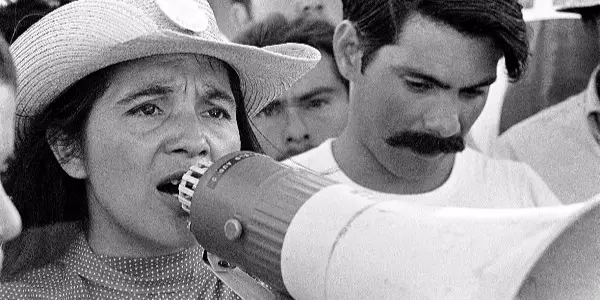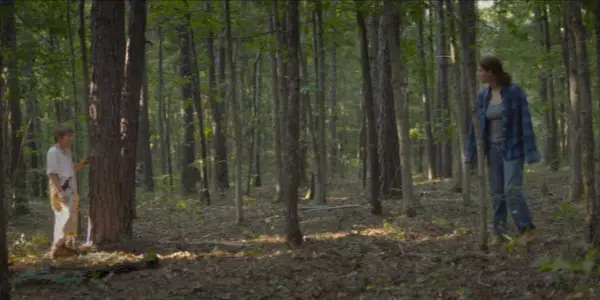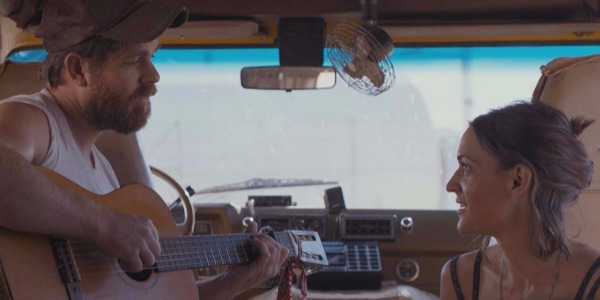Heartland Film Festival Report #3

Alex is a film addict, TV aficionado, and book lover.…
The last weekend of the Heartland Film Festival saw the finalists for Grand Prizes in heavy rotation along with the continuation of the Oscar Foreign Language contenders and bonus screenings for films shown earlier in the week. That meant a full slate for me, and after some juggling I got a mix of crowd favorites and jury front runners to go with one of my most anticipated films of the year. It was a strong end to a great festival, and I hope you all get the chance to see the superb films that played throughout.
Dolores (Peter Bratt)

From the very beginning, Dolores operates under the assumption that you don’t know about Dolores Huerta. History has forgotten her, so the film serves as a way to go back and give her the space she deserves. That means there’s a lot of material to cover, and Dolores succeeds in providing a bird’s-eye view of everything this trailblazing woman has accomplished.
As a bit of background, Huerta was a co-founder of the National Farmworkers Association with Cesar Chavez and spent her life in advocacy work for various movements. As a fiercely outspoken women and a proponent of community activism, she was a key figure in shaping our current world, even having her famous catchphrase, sí se puede (yes we can), taken up by a certain U.S. President.
The film is a standard mix of historical footage and talking head interviews, with the wide breadth of people she has worked with providing some context for the rapidly progressing time frame. Robert Kennedy, Gloria Steinem, and Angela Davis all appear in one way or another, and while they provide some explanation for how Dolores fit into all these causes, the intricacies are left unexplored.
More effective is the use of her own children, who are the only ones to provide some insight into the woman beyond what you would find in textbooks (you know, if she were in textbooks). These moments are the few times the film moves away from straightforward praise, and those looking for more of a personal exploration will likely feel that they are used too sparingly.
But Dolores is more interested in getting the activist recognition, and it serves as an entertaining overview of the staggering things Huerta has accomplished.
Liyana (Aaron Kopp and Amanda Kopp)

The tale of orphaned children in the country with the highest HIV rate in the world sounds like a dour, eat your vegetables sort of documentary, but Liyana goes out of its way to make your time at the cinema lively and engaging.
The film takes a circuitous route in explaining the background of the children at an orphanage in Swaziland, allowing the group to create their own story and animating the finished adventure in a vibrant combination of 3D and 2D images. What the kids came up with was a young girl named Liyana, an orphan (one of many reminders that they’re drawing from their own pasts) who must go on a quest to save her brothers.
Directors Aaron and Amanda Kopp do spend time with the children themselves, and they are able to let them speak in a way that doesn’t feel exploitative or pandering. Interviews are careful not to push the kids into uncomfortable memories, and what’s most remarkable is how the Kopps have made a meticulously crafted film that still feels like a collaboration with the kids.
A moment must be taken to discuss the animation by Shofela Coker, who took the story of Liyana and created a pitch-perfect blend of realism and the fantastic. His are not moving animations but a series of still illustrations more like a comic book. The kids provide the narration, and the weaving between Coker’s bright images and the kids’ wiggling, enthusiastic storytelling provides much of the film’s bounding energy.
The approach certainly makes Liyana unique, but be aware that it gives you a glimpse and not the full picture of these kids. Really, though, there’s plenty of documentaries shoving a camera into the personal business of the disenfranchised. It’s nice to see some filmmakers take a step back and find a more collaborative way to tell people about their subjects.
Tatterdemalion (Ramaa Mosley)

Tatterdemalion had its premiere at the Heartland Film Festival, and after generating good buzz and earning an extra showing, I jumped at the opportunity to catch its last screening. The leap of faith paid off, as Tatterdemalion weaves folklore and family problems into an absorbing, small-scale mystery.
The film follows a veteran returning home to search for her brother, but instead she finds a past she’d rather not dredge up and a boy wandering alone in the woods. The pressure of both unexpected complications leaves her reeling, and as questions linger about the boy’s real home, she finds herself caving to the community’s very literal take on monsters and ghost stories.
Tatterdemalion throws a lot into its brewing pot, and not all of the elements are effectively balanced. Symptoms of the main character’s PTSD comes and goes as does her personal history with the town, but thankfully a large part of the film is devoted to her and the boy in an isolated house. It’s in the interplay between these two guarded characters where the movie shines, building tension by making you question whether they are saving or harming each other.
Leven Rambin carries the film easily as the troubled vet, working effectively against professional and first-time actors picked up in the Ozarks where they filmed. Landon Edwards as the boy is one of these local finds, and as with any film reliant on a child actor, the fact that he gives a naturalistic, unshowy performance is one of the huge reasons why Tatterdemalion works. When you add in Jim Parrack as the kindly social worker trying to keep the boy out of the system, you get a lead trio that gel remarkably well.
As to be expected, not all of the local actors rise to the occasion, but this and other problems are overshadowed by the times Rambin and Edwards are alone in the woods, letting problems slowly creep up. These slow-burning mysteries are what Tatterdemalion does best, and it’s a joy to be swept up in them.
American Folk (David Heinz)

Lots of movies have tried to capture the mood immediately after September 11th, 2001, either directly or indirectly. Let’s face it, America and American cinema has been wrestling with that day ever since it happened, and that unending struggle is something writer/director David Heinz has managed to find an affecting way to tap into with American Folk.
Structured as a road trip movie, the film wastes little time getting its main duo on the road. Musician Elliott (Joe Purdy) and at-home strummer Joni (Amber Rubarth) get stranded in California when flights are grounded due to the attack. Each have pressing reasons to get to New York City, so they hop in a rickety van together and set off on the kind of cross-country road trip that could only happen after a national tragedy.
The two bond over their shared love of folk music, and with everyone they encounter in a friendly, slightly stunned mood, they find themselves giving and receiving bits of kindness wherever they go. I know, it sounds twee, but it magically works. The steady pace of the road trip lulls you into its grasp, and when it pauses for a sing-along between characters, you realize that voices coming together over a melancholic tune is a cathartic way to remember that strange time.
Thankfully, the music isn’t overused. There’s still plenty of time for Elliott and Joni to bicker and bond without a guitar, which makes Heinz’s choice to go with musicians over actors a bit strange. This is both Purdy and Rubarth’s lone acting credit, but you would never guess it by watching the film. They navigate the two-hander subtly, with the good grace to let small moments speak for themselves.
The film does have one too many sidetracks with kooky locals, and an extended sequence towards the end has the sense of a modern eye casting judgement back on the time. Since the rest of the film stays securely in the immediate post-9/11 perspective, the sequence feels out of place, but I understand the desire to throw in something that isn’t all smiles and good cheer.
Considering what a delicate tone Heinz had to strike to make American Folk work, small missteps like these are easily forgiven. Overall, he managed to craft a feel-good film that breaks through even crusty hearts like mine, and that’s no small feat.
Thelma (Joachim Trier)

A supernatural thriller/lesbian romance was not the expected next step for Joachim Trier, who along with his writing partner Eskil Vogt had previously mined men’s emotional landscapes with surprising depth. You can consider me a fangirl of the pair, so even before I knew they were branching out with a film seemingly designed to my taste, I knew I’d be first in line for their next offering.
And I was literally the first to show up at the theater, appropriately cold and ready to be blown away by the Norwegian chiller. So is Thelma a return to the grandeur of Reprise and Oslo, August 31st? No, the film has its flaws, but it’s still a step in the right direction after their lesser English-language debut, Louder Than Bombs.
The mystery of what precisely is going on with Thelma, who goes off to school, falls in love, and begins having strange seizures, is held a tad too long, a sign that Trier and Vogt’s penchant for languid character pieces hasn’t been completely expelled from their systems. Yes, there’s an allegory being built, but the trail of bread crumbs are a bit too thick once sussed out.
These are nit-picking grievances, though, because the wonders of what Thelma offers is apparent from the first scene. A father and daughter out hunting are shown in breathtakingly wide frames, making the trip instantly come across as uncomfortably significant. Other moments of striking horror are peppered throughout the film, often laced with thematic imagery that makes you shiver just a little bit harder.
The perfectly timed crescendos in the score play up the horror and romance elements well, and this perhaps leads to a bit of a mixed message. I think you can read the ending in two distinct ways, and both are supported by the unsteady push-pull of its genre mixing. However you take it, Thelma is likely to stick with you, and it makes for an exciting change-up from some of international cinema’s best.
That’s it for the Heartland Film Festival! Did any of these films seem interesting to you? Let us know in the comments!
Does content like this matter to you?
Become a Member and support film journalism. Unlock access to all of Film Inquiry`s great articles. Join a community of like-minded readers who are passionate about cinema - get access to our private members Network, give back to independent filmmakers, and more.
Alex is a film addict, TV aficionado, and book lover. He's perfecting his cat dad energy.













